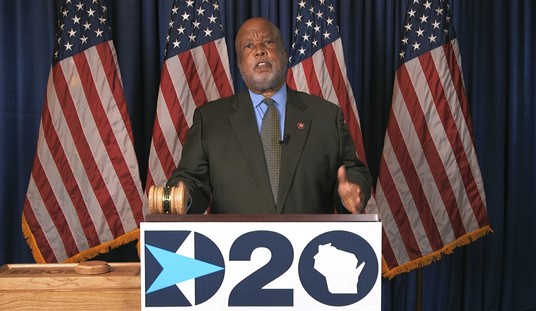“It’s time to acknowledge that we have a problem,” Interior Secretary Ryan Zinke declared in a video to employees published yesterday. “Harassment, intimidation, and discrimination have been a common practice at Interior,” Zinke continued, noting that the Trump administration “inherited” the issue, and pledged that it would now come to an end. Zinke announced that he had fired four senior managers after investigating such complaints, and that he’d “remove four hundred more” if necessary:
Interior Secretary Ryan Zinke revealed today he has fired four senior managers at the Interior Department for inappropriate conduct, including sexual harassment.
“I’ve already removed four senior leaders that were guilty of inappropriate behavior and I will remove four hundred more if necessary. Intimidation, harassment and discrimination is a cancer to any organization. However deep it goes, we will remove it from Interior,” Zinke said in a video posted on the agency’s website today.
What were the nature of the specific allegations? Interior got a little more coy about that, with its spokesperson saying that sexual harassment was among them, but not the only issue:
Interior spokeswoman Heather Swift said in an email the department could not provide any specific information on the people who were fired but said they generally “abused their authority to intimidate or harass fellow employees. This includes but is not limited to sexual harassment.”
Zinke issued this video as Interior released results from a workplace survey conducted in the first quarter of 2017, as Zinke came on board. The results showed that 35% of DOI employees claimed some sort of harassment or discrimination in the previous twelve months, an astounding and disturbing figure, although the definition of terms might become an issue. The sample size, however, was not the issue:
The survey, which is the first of its scope done across the federal government, was designed to assess workplace conditions that Interior employees experience, including the prevalence and context of all forms of harassment. 28,203 employees responded to the survey, or a 44% response rate. Results showed that 20.5 percent of employees experienced age-related harassment, 16.5 percent experienced harassment because of their gender, 9.3 percent because of their race or ethnicity, and 8 percent experienced sexual harassment. Other forms of harassment that were surveyed were religion (7.1 percent), disability (6.1 percent) and sexual orientation (3.6 percent). 0.74 percent of respondents experienced a sexual assault.
In case readers have misplaced their calculators, that last data point would mean that over two hundred Interior employees experienced a sexual assault in 2016 alone. In government offices. And apparently without any recourse, although it’s unclear whether these cases may have also been reported to law enforcement.
That’s appalling, and it clearly put pressure on Zinke to act — while pointing out that he did inherit this situation, as the terms of the survey itself showed. That might put pressure on Sally Jewel, who ran Interior for nearly the entire four years of Barack Obama’s second term, to account for how such a pervasively hostile work environment persisted under her management. Jewell’s name barely came up at all after her confirmation, and this data would suggest that it barely had any impact internally either.
Zinke’s efforts to correct the issue mainly look forward, however, as they should. His department heads have 45 days to put together plans for corrective action to deal with the situation. Meanwhile, Zinke has already put stronger accountability structures in place:
Since the Department received initial survey results, Interior has:
- Issued the National Park Service Anti-Harassment Policy and its accompanying draft Reference Manual in October. NPS has been collecting employee comments on the Reference Manual and will finalize it soon. The new NPS anti-harassment policy has been strengthened by defining more broadly what is prohibited harassing conduct to ensure that employees can be held accountable for harassing conduct even if such behavior may not rise to the level of illegal harassment under EEO laws. This should serve as template for other bureaus and offices
- Drafted a Department-wide harassing conduct policy that is similar to the NPS Anti-Harassment Policy; it defines more broadly prohibited harassing conduct to allow managers to hold employees accountable for conduct that may not rise to the level of illegal harassment. The Policy will have a reporting structure to ensure that management knows when allegations of harassing conduct are raised and that matters are investigated quickly.
- Issued an Investigator Guide to Conducting Administrative Investigators. The guidance sets consistent high standards, ensuring that misconduct investigations, including those dealing with harassing conduct, are conducted in a thorough, impartial and fair manner, and any resulting disciplinary or other actions are defensible.
- Trained close to 100 employee relations and employment law practitioners on conducting administrative investigations into allegations of misconduct.
- Expanded the cadre of ombuds professionals available, with most Bureaus now having a dedicated ombuds resource in place.
- Created/updated dedicated internal and external employee webpages with resources on harassment, discrimination and retaliation.
Don’t forget that this was the first long-range survey of its kind in the federal government. After these results, the Trump administration should have every Cabinet department conduct similar surveys and get ahead of what will likely be an avalanche of complaints in the post-Weinstein era.








Join the conversation as a VIP Member